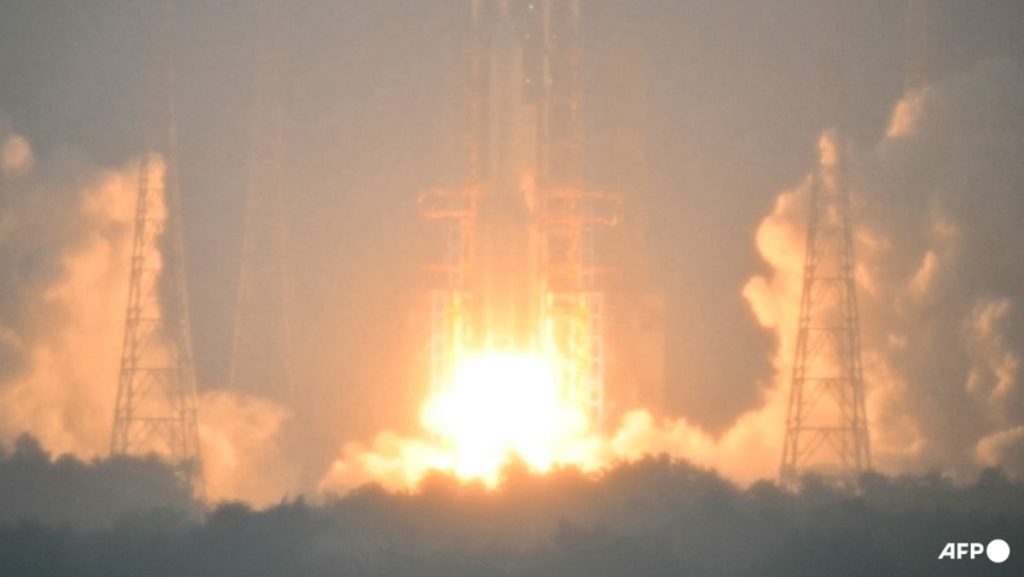China launched the Chang’e-6 uncrewed spacecraft on a mission to retrieve rocks and soil from the far side of the moon, making it the first country to attempt such a task. The Long March-5 rocket carrying the more than 8 metric ton probe took off from the Wenchang Space Launch Center in Hainan. Chang’e-6 is set to land in the South Pole-Aitken Basin on the far side of the moon, retrieve samples, and return them to Earth, marking another achievement in China’s lunar and space exploration program.
Professionals from France, Italy, Pakistan, and the European Space Agency attended the launch, with moon-studying payloads aboard Chang’e-6. However, no US organizations applied to send a payload due to a ban on collaboration between China and NASA. The far side of the moon holds a mystique as it is perpetually hidden from view, prompting increased interest in studying this unexplored region. The launching of Chang’e-6 represents an opportunity for international collaboration in exploring the moon’s hidden side.
After separating from the rocket, it will take the probe a few days to reach the moon’s orbit and land in early June. The Chang’e-6 probe will then spend two days collecting 2kg of samples before returning to Earth, where it is expected to land in Inner Mongolia. The geological age of the South Pole-Aitken Basin, estimated to be about four billion years, provides valuable scientific information for researchers. The samples brought back by Chang’e-5 in 2020 offered new insights into the moon’s history, helping scientists more accurately date volcanic activity and discover a new mineral.
The French researcher on the Chang’e-6 mission expressed surprise at China’s rapid development and success in its lunar and space exploration efforts. In recent years, China has achieved significant milestones in its space program, with Chang’e-4 making the first unmanned landing on the far side of the moon in 2018, while Chang’e-5 retrieved lunar samples in 2020 for the first time in over four decades. If successful, Chang’e-6 could become the first mission to retrieve samples from the moon’s hidden side, further advancing China’s space exploration capabilities.
The proximity to international scientists, diplomats, and space agency officials during the Chang’e-6 launch highlights China’s willingness to engage in collaboration and exchange of expertise with other countries. The mission’s inclusion of foreign payloads indicates a shared interest in advancing lunar exploration and research. The scientific value of the samples gathered by Chang’e-6 is expected to surpass previous findings from Soviet and American missions, contributing to a deeper understanding of the moon’s geological history and evolution.
Overall, the launch of the Chang’e-6 mission represents a significant advancement in China’s space exploration program, showcasing the country’s commitment to pushing boundaries and exploring new frontiers. The retrieval of samples from the far side of the moon promises to provide valuable insights into the moon’s composition and history, with potential implications for future lunar missions and scientific research. By working with international partners and leveraging cutting-edge technology, China continues to demonstrate its capabilities and ambitions in the field of space exploration.













